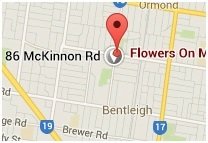Hyperhidrosis (Excessive Sweating)
Hyperhidrosis is a condition of excessive sweating in certain parts of the body. Axillary hyperhidrosis refers to severe sweating under the arms. Excessive sweating without any underlying medical condition is called primary hyperhidrosis. If the cause of excessive sweating is due to a medical condition, this is referred to as secondary hyperhidrosis. Hyperhidrosis is caused by overactive sweat glands where increased release of acetylcholine, a chemical from the central nervous system that directs the sweat glands to produce sweat, causes excessive perspiration. Hyperhidrosis may significantly affect the social and psychological wellbeing of an individual. It may cause physical discomfort, social embarrassment, affect occupational and daily activities, and at times may also cause social isolation.
Several treatment options are available for treatment of hyperhidrosis.
- Antiperspirants/deodorants: Aluminum chloride hexahydrate containing agents block the sweat pores and deodorants help control the body odour. These agents may cause irritation and itching of skin.
- Medications: Agents that inhibit the release of acetylcholine such as glycopyrrolate (Robinul, Robinul-Forte). These agents may cause dry mouth, dizziness and other side effects.
- Iontophoresis: A small electric current is used to temporarily block the sweat glands. This is often used for treating excessive sweating of the palms and soles of the feet. A drawback with ionotophoresis is that the results are temporary, require multiple sessions every week, and it cannot be used for underarm sweating.
- Surgery: Surgery may be performed to remove the sweat glands or to interrupt the impulses from the central nervous system in a procedure called Endoscopic thoracic sympathectomy (ETS). The ETS procedure is considered a last resort as it can cause a side effect of compensatory sweating that can be even worse than the original problem.
- Spread of toxin effects to parts of the body away from the site of injection,
- Muscle weakness, double/blurred vision, breathing difficulties, rash,
- Dry mouth, dizziness, pain at injection site, headache, eye problems and allergic reactions
Botox: Considering the limitations of all other treatments, Botox® may be a better choice for axillary hyperhidrosis. Botox blocks the nerves responsible for sweating in the underarm and prevents excessive sweating. It is recommended by the U.S. Food and Drug Administration (FDA) as well as renowned dermatologists for treatment of severe underarm sweating. The effect of each Botox treatment may last for 6–10 months.
Botox is available in 100- and 200- unit single-use vials. Your dermatologist commonly injects 50 units of Botox in 2 mL saline at 10–15 sites (0.1–0.2 mL in each) under each arm.
Contraindications
Botox is contraindicated in patients with hypersensitivity to any botulinum toxin and in patients with infection at the site of injection.
Adverse effects

Looking Beautiful..!!
- Monday, Tuesday & Friday: 8AM-9PM
- Wednesday & Thursday: 8AM-6PM
- Sat: 9AM-1PM
- Sun: Closed

 Menu
Menu





















